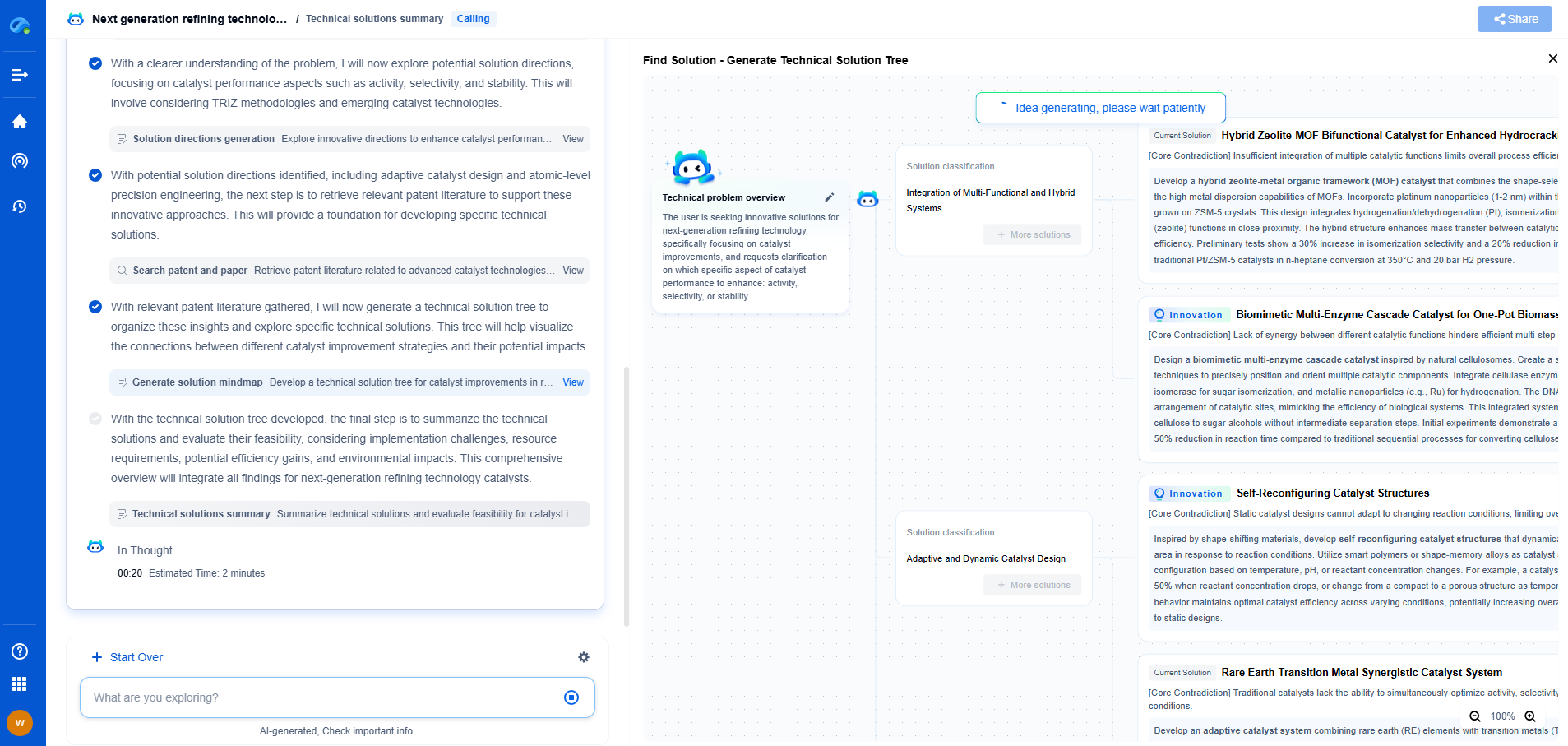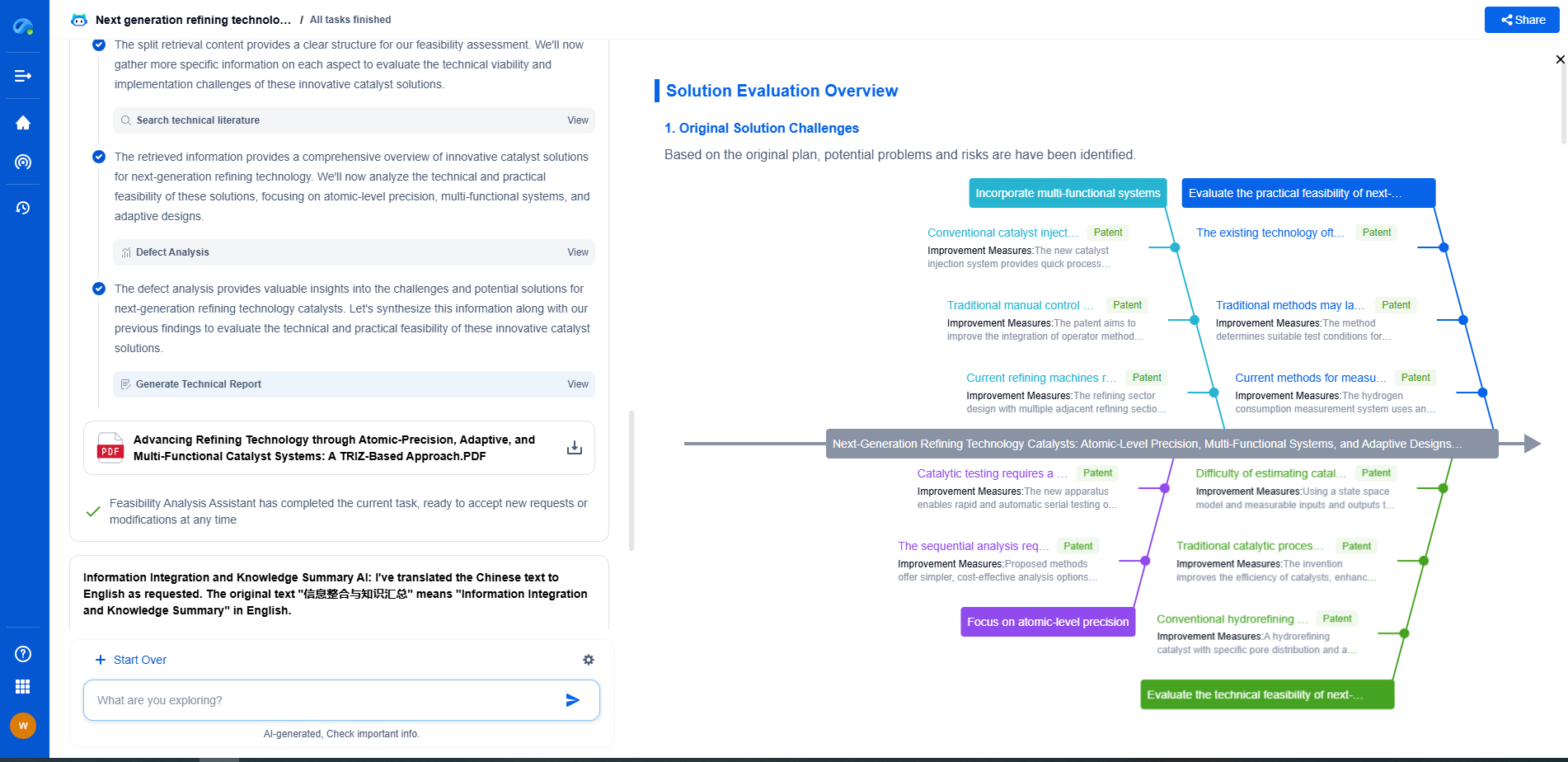API 1160 vs. ISO 13623: Which Offers Better Guidance on Threat Mitigation?
JUN 20, 2025 |
In the realm of pipeline integrity management, two standards often come to the forefront: API 1160 and ISO 13623. Both are instrumental in guiding organizations on how to effectively mitigate threats and ensure safe operations. API 1160, established by the American Petroleum Institute, is specifically tailored for pipelines in the United States, focusing on the management of pipeline integrity. ISO 13623, on the other hand, is an international standard developed by the International Organization for Standardization, addressing the requirements for managing pipeline transportation systems worldwide.
Scope and Application
API 1160 provides a comprehensive framework for managing the integrity of liquid pipelines. It emphasizes risk management and threat identification, offering guidelines on assessing and addressing risks throughout the pipeline lifecycle. The standard includes detailed procedures for performing integrity assessments and suggests preventive measures to mitigate potential threats. API 1160 is particularly useful for companies operating within the United States, as it aligns with domestic regulatory requirements.
Conversely, ISO 13623 offers a broader perspective, applicable to pipeline systems globally. It outlines general requirements and recommendations for the safe design, construction, operation, and maintenance of pipelines. This standard is designed to be flexible, allowing for adaptation to various geographical and operational contexts. ISO 13623 is ideal for multinational corporations seeking a harmonized approach to pipeline integrity across different regions.
Threat Identification and Mitigation Strategies
API 1160 and ISO 13623 both emphasize the importance of threat identification, albeit in slightly different ways. API 1160 is more prescriptive, providing a detailed list of potential threats, including corrosion, third-party damage, and material defects. It advocates for regular monitoring and inspections to detect and address these risks promptly.
ISO 13623, while still focused on threat identification, takes a more holistic approach. It encourages organizations to tailor their threat mitigation strategies to specific operational contexts, considering factors such as environmental conditions and pipeline design. The standard promotes the use of risk assessments to prioritize threats, ensuring resources are allocated effectively.
Risk Assessment and Management
Risk assessment is a cornerstone of both standards. API 1160 outlines a structured process for evaluating risks, incorporating methods such as failure modes, effects analysis, and probabilistic risk assessment. It emphasizes the need for continuous improvement, urging companies to refine their risk management processes based on new data and technological advancements.
ISO 13623 also prioritizes risk assessment, but with a focus on adaptability. It advocates for the use of a risk-based approach, allowing organizations to implement risk management strategies that align with their operational needs. This flexibility is particularly beneficial for pipelines operating in diverse environments, where threats may vary significantly.
Technical Guidelines and Best Practices
API 1160 offers detailed technical guidelines, covering aspects such as integrity management programs, inspection techniques, and data analysis. The standard provides specific recommendations on the use of inline inspection tools, direct assessment methods, and hydrostatic testing. These guidelines are designed to assist organizations in developing effective threat mitigation strategies.
ISO 13623, while not as prescriptive, provides best practice recommendations, encouraging organizations to implement measures that align with industry standards. It emphasizes the importance of maintaining pipeline integrity through regular inspections and monitoring, highlighting the need for a proactive approach to threat mitigation.
Choosing the Right Standard
The decision between API 1160 and ISO 13623 ultimately depends on the specific needs and operational context of an organization. For companies operating primarily within the United States, API 1160 offers targeted guidance that aligns with domestic regulatory requirements. Its prescriptive nature provides clarity and direction, helping organizations navigate the complexities of pipeline integrity management.
For multinational corporations or those operating in diverse environments, ISO 13623 offers a flexible framework that can be adapted to various circumstances. Its global perspective ensures that organizations can implement a cohesive approach to threat mitigation, regardless of geographic location.
Conclusion
Both API 1160 and ISO 13623 provide valuable guidance on threat mitigation, each with its unique strengths. API 1160 is ideal for those seeking detailed, prescriptive guidelines within the United States, while ISO 13623 offers a versatile, international approach suitable for global operations. Understanding the nuances of each standard is crucial for organizations aiming to optimize their pipeline integrity management strategies and ensure safe operations across all environments.
Transform the Way You Innovate in Pipeline Technology—with AI-Powered Intelligence
From corrosion-resistant materials to smart monitoring systems and advanced flow control mechanisms, the pipeline industry is undergoing rapid technological transformation. Yet keeping up with evolving engineering solutions, regulatory landscapes, and competitive patents can be a major bottleneck for R&D and IP teams.
Patsnap Eureka is your AI-powered research companion—built specifically for professionals in high-tech and infrastructure domains like pipeline technology. Whether you're designing high-pressure transport systems, assessing trenchless installation innovations, or safeguarding proprietary flow assurance solutions, Eureka provides real-time insights into global patent trends, emerging technologies, and R&D intelligence—all in one intuitive interface.
Empower your team to innovate faster, reduce technical blind spots, and stay ahead of industry shifts. Discover Patsnap Eureka today and bring clarity and confidence to your pipeline technology decisions.
- R&D
- Intellectual Property
- Life Sciences
- Materials
- Tech Scout
- Unparalleled Data Quality
- Higher Quality Content
- 60% Fewer Hallucinations
Browse by: Latest US Patents, China's latest patents, Technical Efficacy Thesaurus, Application Domain, Technology Topic, Popular Technical Reports.
© 2025 PatSnap. All rights reserved.Legal|Privacy policy|Modern Slavery Act Transparency Statement|Sitemap|About US| Contact US: help@patsnap.com

